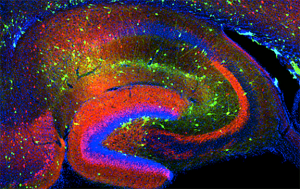
National Geographic Channel is featuring a slick new program:
“Breakthrough: Decoding the Brain” on Sunday, November 15, at 9 pm ET on National Geographic Channel.
As part of this show’s launch, they’re posing the following question for commentary:
“What if scientists were able to implant or erase memories? For some, like those suffering from PTSD this could be life-changing, or do you think this is scientific innovation gone too far?”
This question is right up our alley!
The Brain and Chronic Pain
The recent meeting of the American Academy of Orthopaedic Manual Physical Therapists (AAOMPT) in Louisville, KY was a bit unique. Unique, because in contrast to years and years of this conference unsurprisingly featuring scientists purporting the evidence for using manual therapy techniques like spinal manipulation for patients with musculoskeletal pain, this year the conference featured speakers who didn’t use their hands. The conference keynote was delivered by Dr. Peter O’Sullivan, (his cool blog is here) who spoke about his work related to Congnitive Functional Therapy for patients with chronic pain. Other talks revolved around pain science, big data, and a general change in the tenor was noticeable.
Manual therapists have long struggled with patients who have chronic symptoms, as short term gains are quickly realized, but long terms gains are extremely difficult to achieve. So, what prompted the AAOMPT, a scientific academy founded around manual therapy techniques, education, and science, to feature a pallet of speakers speaking about techniques that didn’t involve hands or cavitating joints? Well, friends, science is always a moving target, and it’s broad, and sometimes you need to look outside your cerebral solar system to learn new things. This is one of those times for physical therapists!
But, perhaps we don’t need to travel too far! This new traditional neuroscience science is now showing up in manual therapy journals like…well, Manual Therapy! In a recent article, entitled, “Exercise therapy for chronic musculoskeletal pain: Innovation by altering pain memories,” Nijs et al address the concept of movement-related pain memories and exercise for patients with chronic pain. They suggest that clinicians should preempt exercise therapy by first priming the brain via neuroscience education, and then utilizing movements to help the body ‘forget’ those memories associated with those movements and pain. Sounds just like Peter O’Sullivan’s CFT doesn’t it? This work builds on work by neuroscientists who are exploring the role of the hippocampus in generating pain-related memories. This is a wide open field, and the potential of learning how to impact pain related memories is truly astonishing!
Manipulating Hippocampi?
While the concept of having memories erased seems on the surface frightening… (I wouldn’t want to forget that cool downhill bike ride down Mount Snow even though it hurt!)… it does seem that breaking links between pain experiences and memories is one of the keys to managing chronic musculoskeletal pain conditions. Just how we do that best remains to be seen! Will future physical therapists have a cadre of tools that not only allows for mechanical inputs to alter central nervous system activity (spinal manipulation), but also precise strategies to target pain memories and more directly impact cognitive reasoning about pain? I sure hope so!
I’m excited for the new Breakthrough series on NatGeo. It just seems like one of those times when all sorts of science is converging on something…on the true potential of that “3lb mass in our heads!”

“While the concept of having memories erased seems on the surface frightening”
Just watch “Eternal Sunshine of a Spotless Mind” if you want an idea of how scary it would actually be! Using it for relieving pain obviously sounds like a great concept, but if it comes with the risk of losing your actual memories, I’m not sure I’d want to go through with it.